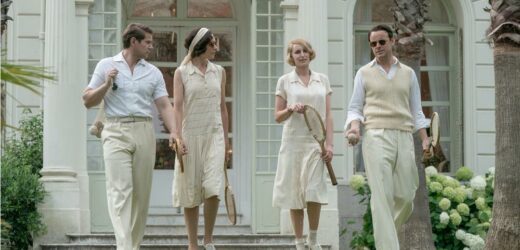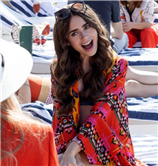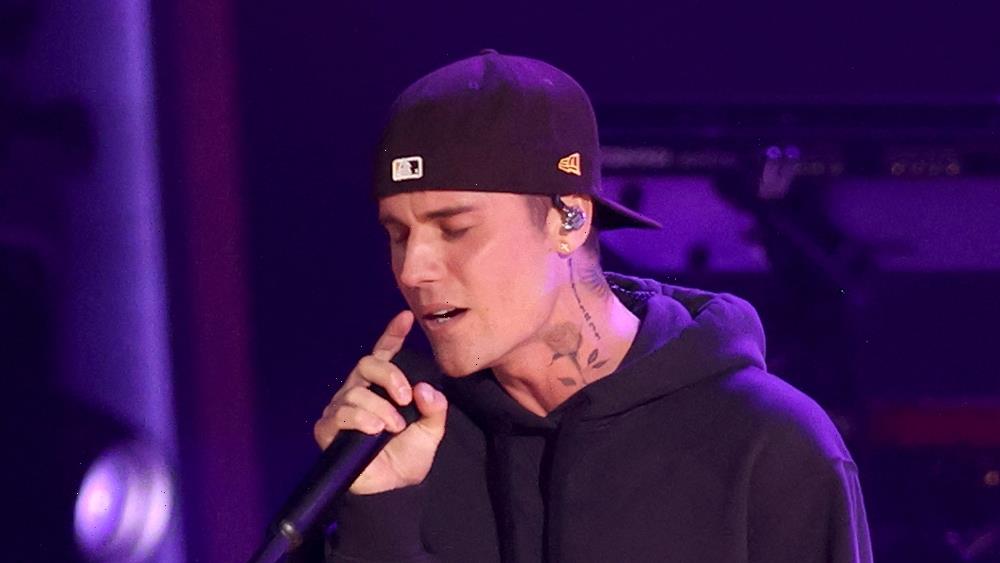“Downton Abbey: A New Era” is bookended by a wedding and a funeral. In between, a good deal happens: Babies are born and paternities questioned, long-simmering romances clinched and fresh ones set to bloom; an excursion takes a fraction of the family to France while a film crew keeps the rest of them busy back home. It all adds up to rather more than audiences of 2019’s standalone “Downton Abbey” feature must have expected, if only because the earlier film seemed conspicuously uninterested in starting anything new.
That’s the trouble with television — from a film critic’s perspective, at least. Movies are by their nature story-obsessed — plot-driven locomotives, compelled by conflict, engineered to reach a tidy resolution of some kind within two hours or so. On TV, on the other hand, once a small-screen world has been established, it’s designed to remain open-ended from episode to episode and season to season, obliging audiences to tune in for updates so long as it stays on air, before being unceremoniously canceled without closure.
As ceremonial as such spinoffs come, the first “Downton Abbey” movie served as a kind of fan-service coda, contrived to put a neat bow and tassels on the many characters and intrigues that had been seeded over six seasons of the British TV series. It was all about closure, and now, with “A New Era,” creator and screenwriter Julian Fellowes dedicates still more energy to sorting out the loose ends, although this time, he provides something more compelling than a royal visit to engage us.
We are far from the wonderfully lived-in cacophony of Robert Altman’s “Gosford Park” — the terrific upstairs-downstairs drama that landed Fellowes an Oscar, making him the resident expert on this aristocratic milieu. New-to-the-franchise director Simon Curtis (“My Week With Marilyn”) can handle the drama but favors the starchy, dress-up “Masterpiece Theatre” aesthetic of the show. Not that there’s anything wrong with that. “Downton Abbey” operates partly on the escapism of seeing how the upper class lives, but also on the satisfaction of realizing that even they must contend with rude relatives and leaky roofs.
As the film opens, Violet Crawley (Maggie Smith) — everyone’s favorite character, Lady Grantham, of the barbed tongue and stiletto wit — announces that she has inherited a villa in the south of France, gifted to her by an old flame and now contested by his widow (French legend Nathalie Baye). To sort out the matter, Violet dispatches her son Richard (Hugh Bonneville), his wife, Cora (Elizabeth McGovern), granddaughter Edith (Laura Carmichael) and a handful of others, including old-habits-die-hard ex-butler Carson (Jim Carter).
While that lot is away on the Continent, Mary (Michelle Dockery) accepts a request by the British Lion film company to shoot a movie at Downton Abbey and, in managing the project, cements her role as the family’s new matriarch. Richard doesn’t want anything to do with the vulgar ordeal. “They can’t expect us to deal with cinema people,” he drawls, pronouncing it “kinema” with all the antipathy of someone who’d never partake of anything so common as a motion picture. And yet, accepting the offer would not only pay handsomely — enough to fix up the aging castle — but also provide all the spectacle one needs for another big-screen reunion. (These feature-length follow-ups play like old-fashioned holiday TV specials, presenting corny, high-concept situations into which nearly the entire cast can insert themselves, only with more magic-hour drone shots.)
It’s a clever idea to bring antique klieg lights and hand-cranked cameras into what is effectively a great big film set already, transformed with every episode by production designer Donal Woods and costume designer Anna Mary Scott Robbins. It leads one to consider how the hit series has impacted its own historic locations, turning Highclere Castle (the “real” Downton Abbey), the town of Bampton and such into tourist destinations. “A New Era” takes place in 1929, just as talkies are taking over — an innovation that forces the crew to adapt on the fly, adding a lighthearted dash of “Singin’ in the Rain” in the process.
Naturally, the staff are awestruck by screen stars Myrna Dalgleish (Laura Haddock) and Guy Dexter (Dominic West), while Mary sparks a flirtatious relationship with the film’s director, Jack Barber (Hugh Dancy). Her husband Henry (who is played by Matthew Goode) is absent from the entire movie, leaving room for a potential affair. This temptation nicely echoes the film’s exotic French subplot, in which a compelling mystery about Violet’s past poses enticing questions: Could she have indulged a fling half a century earlier, and if so, does that cast doubt on Richard’s legitimacy?
Nothing too upsetting is permitted to happen in a “Downton Abbey” sequel, lest it tarnish fans’ affection for what has come before, and yet, it’s time to say goodbye to a beloved cast member. The movie takes no risks there, alas. So full of life was this character that they should have been struck by lightning or eaten by a shark — something suitably dramatic — or else ambled ghost-like through a ball (the way the former film really ought to have ended, à la Visconti’s “The Leopard”) as the world makes way for a new era. Instead, Fellowes gives us an affectionate group hug, which is effectively what these encore visits amount to.
Source: Read Full Article


